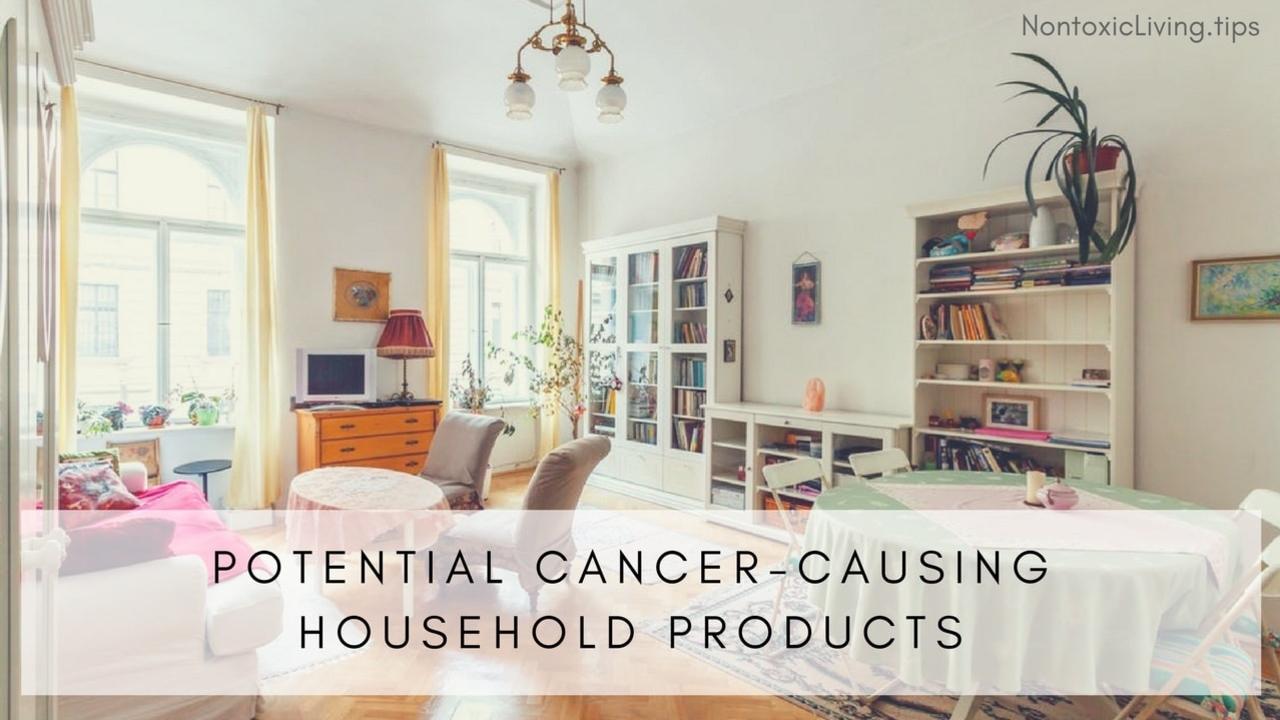
Potential Cancer-Causing Household Products
Nov 06, 2017by Angela Cummings and Sophia Ruan Gushée
Most people, it seems, think that their home is a healthy environment that is safe and free from harmful chemicals. In reality, most homes are full of products that expose those around them to substances or energy that may contribute to cancer as well as challenges to the reproductive system, brain and nervous system, immune system, and endocrine system.
While many people may not appear to be impacted by this, others may suffer from various chronic symptoms, illnesses, or other health conditions. In fact, hundreds of chemicals found in our everyday products have been linked to cancer.(1)
Since awareness is key, this article highlights five categories of household items that may contain cancer-causing chemicals.
1. Couches and Chairs
Comfy couches and chairs are great for curling up and reading a book, or cuddling with kids, but not when they’re made from chemicals found to cause cancer. From the inner polyurethane foam to the outer textile covering, standard couches and chairs contain chemical flame retardants and chemical solvents (which often contain benzene, chlorine, and methylene chloride) that have been linked to cancer. In New York state alone, childhood leukemia (a type of cancer) increased by over 40% and has been linked to benzene and other chemical solvents, according to a 2013 press release by Mount Sini Hospital. (2)
Look for couches and chairs made from natural materials, and free of chemical treatments. For the inner cushioning or stuffing, natural rubber or organic cotton and wool are common options. For the outer material, natural textiles, such as organic cotton, hemp, or linen are popular.
2. Candles and Air Fresheners
The scents that smell oh so good can be oh so bad for health. Scents in candles and air fresheners are typically made from a mixture of chemicals.
The International Fragrance Association (IFRA) lists over 3,000 chemicals that are used to concoct a scent. Several of those chemicals have been linked to cancer.(3) These chemicals are in the phthalates, VOCs, and solvents. In addition to fragrance, candles are often made with paraffin wax, which is a petroleum-byproduct that releases toxic chemicals when it’s heated or burned. (4)
Choose candles made from 100% beeswax, and an organic cotton wick. No scent is better since burning anything may contaminate indoor air. However, when you can't resist scents, then choose candles that use 100% pure essential oils.
Instead of air fresheners, diffuse organic essential oils, or make your own air fresheners by adding citrus peel, cinnamon or clove to water and simmering it on the stove. (5)
3. Paints
Adding a splash of color to your walls could be also be adding a splash of VOCs. Volatile Organic Compounds (VOCs) are a category of chemicals found to cause cancer. According to the U.S. Environmental Protection Agency, paints are one of the many products with VOCs that can result in short- or long- term health effects, such as cancer. (6)
When painting, find paints that are labeled zero-VOC or made with natural materials. Choose coloring (pigments or dyes) that are also zero-VOC, or made with natural materials.
4. Shower Curtains
Seemingly harmless, shower curtains and other products made from vinyl can pollute indoor air quality. The distinctive new shower curtain smell is actually chemicals that are off-gassing into the air, affecting indoor air quality and health. When the vinyl is exposed to moisture and heat, it off-gasses even more.
Among the mix of chemicals used are polyvinyl chloride (PVC), chlorine, and phthalates. All three have been linked to cancer.
Glass shower doors are a great alternative to shower curtains. However, if you decide to use a shower curtain, choose one that is made from natural materials.
5. Food Storage Containers
Plastic food storage containers can fill a kitchen cabinet in no time. These little plastic containers are made from petroleum-byproducts, and contain endocrine-disrupting chemicals like BPA that have been linked to many types of cancer. Plastic products not only off-gas chemicals into the air, but also leach them into the food.
Store your food in a ceramic or glass storage containers instead of plastic to help minimize toxic chemicals in your diet.

Household products can be a significant source of chemicals in the home, and most people don’t realize it. These chemicals have been linked to several types of cancer, and other health conditions. Start incorporating this pillar of health into your consideration for healthy living. Join the D-Tox Academy for further support and guidance.
References
(1) A to Z of D-Toxing, Works Cited Part 1
(2) Mount Siani
(3) Safe Cosmetics
(4) A to Z of D-Toxing, Works Cited Part 3 and 4
Stay connected with nontoxic lifestyle news and updates!
Receive our free Ruan Living Nontoxic Cleaning Guide when you join our email list.
Don't worry, your information will not be shared.
We hate SPAM. We will never sell your information, for any reason.







